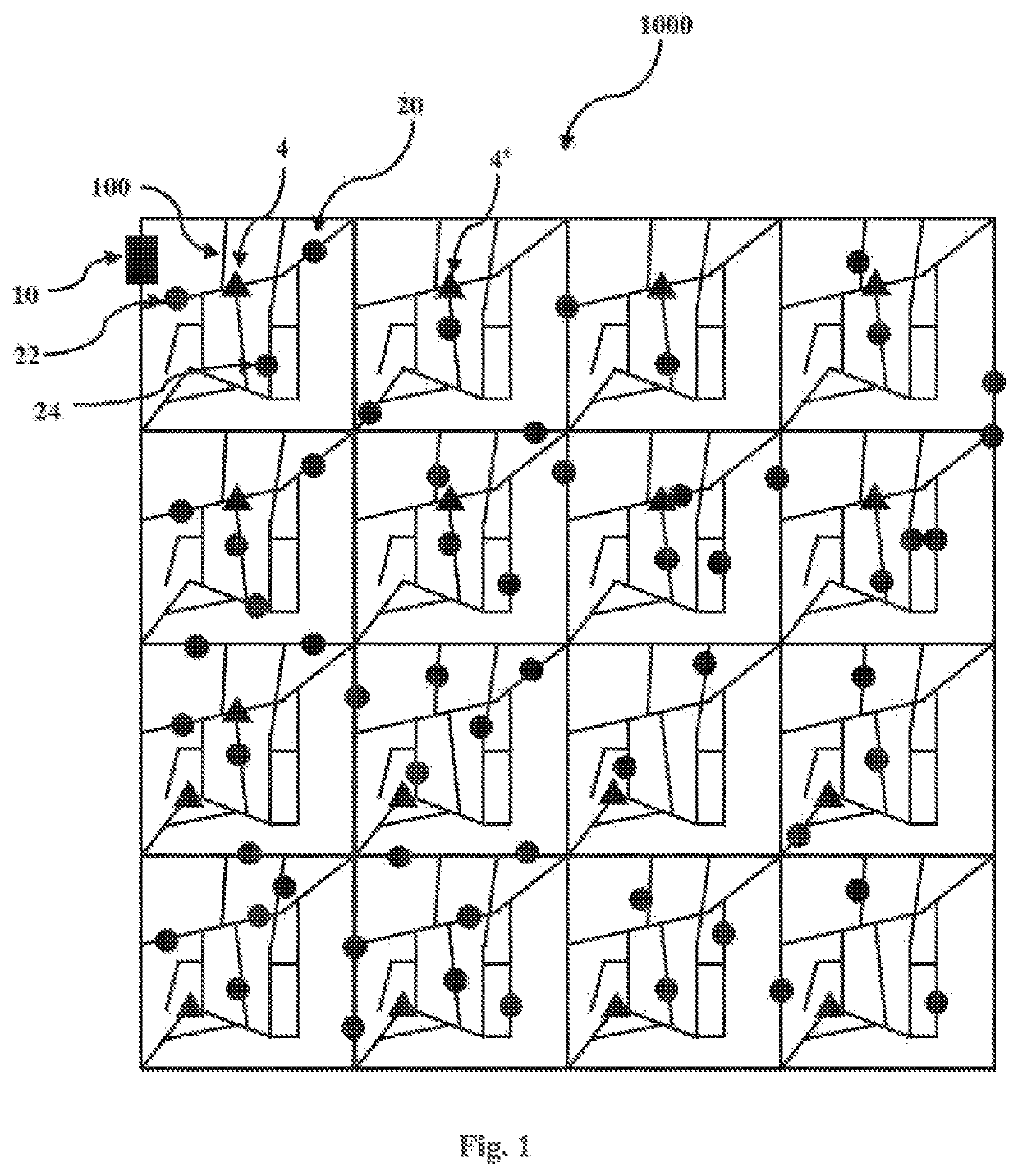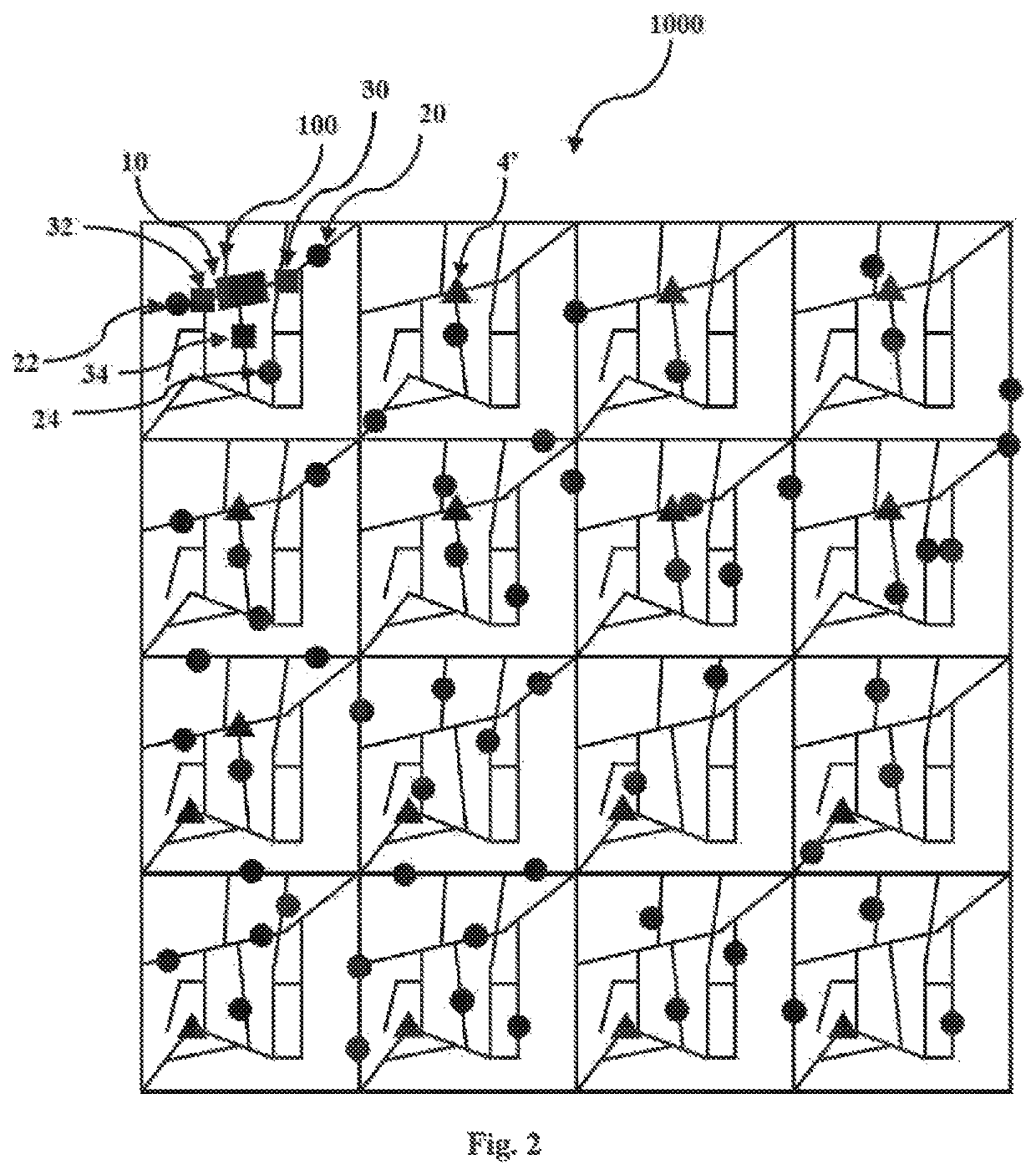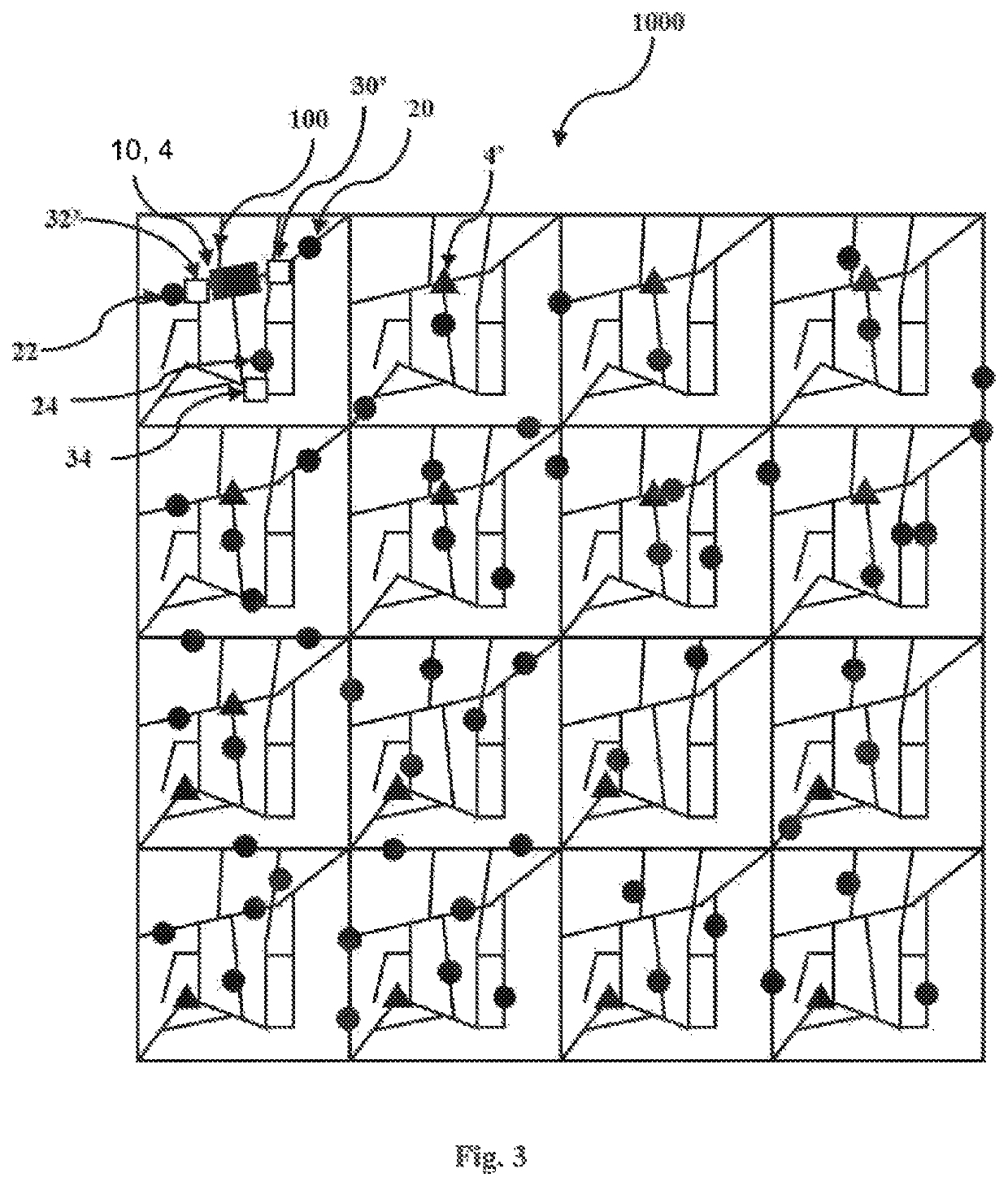Method and system for delivering items
a delivery method and delivery system technology, applied in the field of delivery methods and systems, can solve the problems of human prone to failure, wrong goods are delivered to the addressee, certain drawbacks and limitations
- Summary
- Abstract
- Description
- Claims
- Application Information
AI Technical Summary
Benefits of technology
Problems solved by technology
Method used
Image
Examples
Embodiment Construction
[0056]FIG. 1 depicts a network 1000 of streets, which streets are represented by lines 100 (though only one street carries the reference numeral 100 for clarity and simplicity of illustration). In the street network 1000, there are delivery addresses, delivery points or delivery locations 20, 22, 24, generally illustrated by circles. Again, only some of the delivery points carry a reference numeral for ease and clarity of illustration. Furthermore, FIG. 1 also depicts a mobile transport apparatus, that may be a truck or van 10 adapted to load delivery robots, which truck or van is generally depicted as a rectangle, and a plurality of robot drop locations 4. The truck or van 10 may be an autonomously or semi-autonomously driving truck or van. The robot drop locations 4 are generally depicted as triangles and again, only one robot drop location (i.e. one triangle) carries the reference numeral 4 for ease and clarity of illustration. The robot drop locations 4 are locations where the v...
PUM
 Login to View More
Login to View More Abstract
Description
Claims
Application Information
 Login to View More
Login to View More - R&D
- Intellectual Property
- Life Sciences
- Materials
- Tech Scout
- Unparalleled Data Quality
- Higher Quality Content
- 60% Fewer Hallucinations
Browse by: Latest US Patents, China's latest patents, Technical Efficacy Thesaurus, Application Domain, Technology Topic, Popular Technical Reports.
© 2025 PatSnap. All rights reserved.Legal|Privacy policy|Modern Slavery Act Transparency Statement|Sitemap|About US| Contact US: help@patsnap.com



